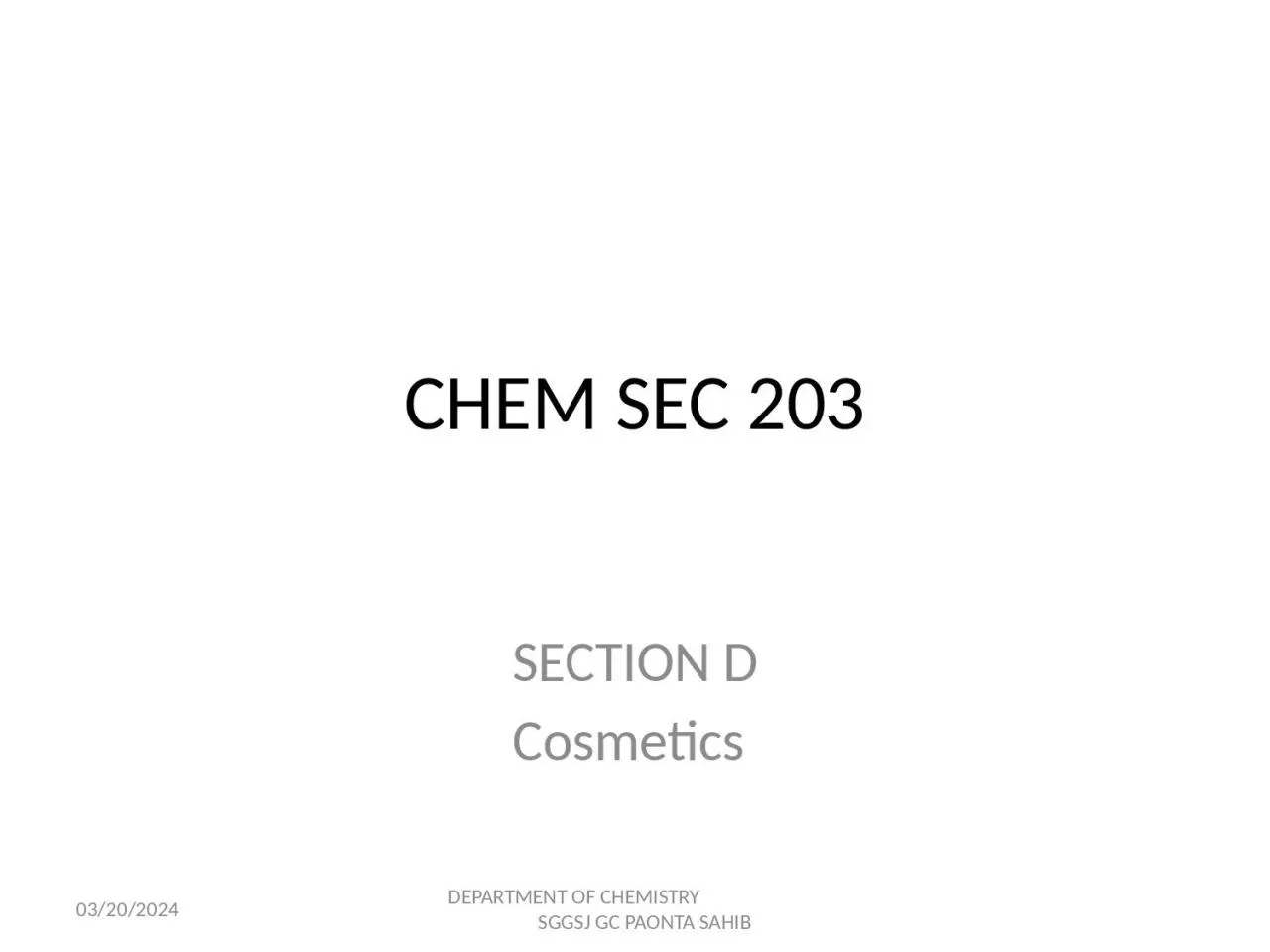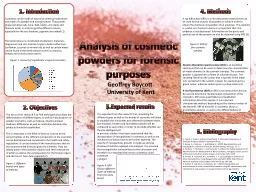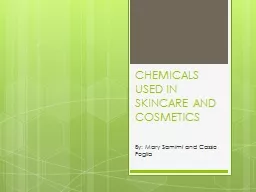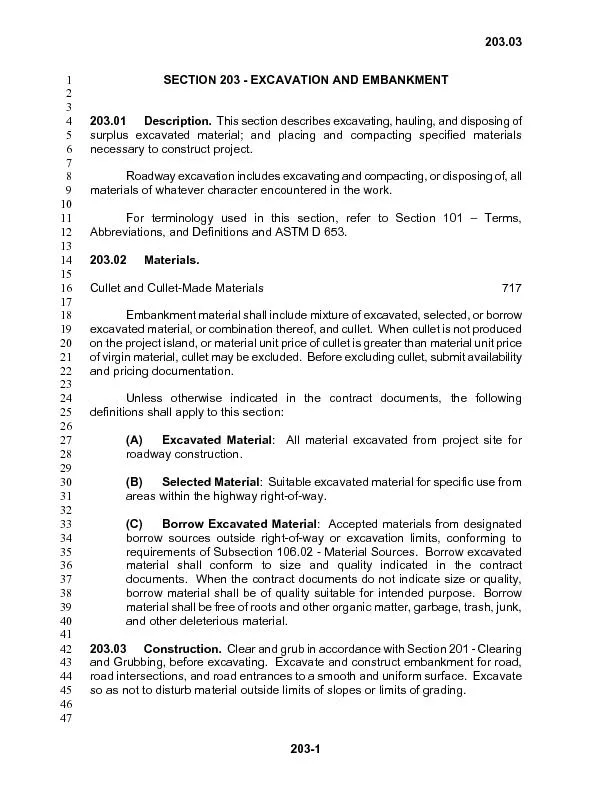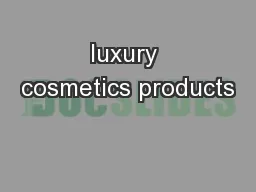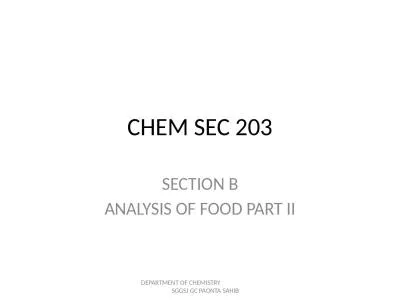PPT-CHEM SEC 203 SECTION D Cosmetics
Author : elysha | Published Date : 2024-01-29
7162022 DEPARTMENT OF CHEMISTRY SGGSJ GC PAONTA SAHIB SYLLABUS 7162022 DEPARTMENT OF CHEMISTRY SGGSJ GC PAONTA SAHIB TOPICS FOR THIS LECTURE
Presentation Embed Code
Download Presentation
Download Presentation The PPT/PDF document "CHEM SEC 203 SECTION D Cosmetics" is the property of its rightful owner. Permission is granted to download and print the materials on this website for personal, non-commercial use only, and to display it on your personal computer provided you do not modify the materials and that you retain all copyright notices contained in the materials. By downloading content from our website, you accept the terms of this agreement.
CHEM SEC 203 SECTION D Cosmetics: Transcript
Download Rules Of Document
"CHEM SEC 203 SECTION D Cosmetics"The content belongs to its owner. You may download and print it for personal use, without modification, and keep all copyright notices. By downloading, you agree to these terms.
Related Documents

